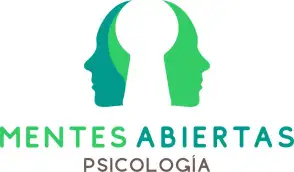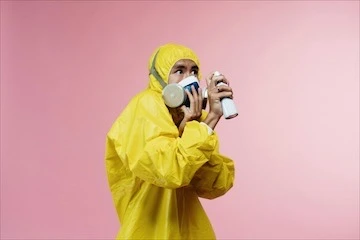Excessive handwashing is a common compulsion in contamination OCD. Individuals with this disorder experience intense fear of dirt, germs, or other forms of contamination, leading to repetitive cleaning or avoidance rituals to reduce anxiety. While these compulsions provide temporary relief, they reinforce obsessive fears in the long run and significantly interfere with daily life.
Cognitive-Behavioral Therapy (CBT) as the Primary Treatment
Cognitive-behavioral therapy (CBT), especially when incorporating exposure-based techniques, is the first-line psychotherapeutic approach for contamination OCD. CBT helps patients identify irrational obsessive thoughts and modify behavioral responses. Clinical evidence strongly supports its use: in fact, CBT is considered the "gold standard" for OCD treatment according to numerous studies and experts. Major mental health institutions (such as the U.S. National Institute of Mental Health, Mayo Clinic, and Harvard Medical School) recommend CBT for OCD. Some studies indicate that about 85% of individuals who complete CBT treatment experience a significant reduction in obsessive-compulsive symptoms. In many cases, CBT alone produces substantial improvements, although in more severe situations, it can be combined with medication to enhance results.
Exposure and Response Prevention (ERP): A Key Technique
Within CBT, the fundamental strategy for contamination OCD is exposure and response prevention (ERP). Numerous studies have shown that ERP—a specific type of CBT—effectively reduces compulsive behaviors, even in individuals who have not responded well to medications. This method involves gradually exposing the patient to feared objects or situations (e.g., touching “dirty” or contaminated surfaces) without performing the usual cleaning or avoidance ritual. By repeatedly facing the feared stimulus without carrying out the compulsion (e.g., not washing hands immediately afterward), the patient learns that anxiety diminishes on its own over time and that catastrophic consequences do not occur.
Although exposure initially causes high anxiety, with therapeutic support, patients develop tolerance and confidence in managing distress. Progress is typically hierarchical, starting with simpler tasks and gradually increasing difficulty as the individual becomes accustomed. For example, a patient might first touch a mildly “contaminated” object briefly and delay washing for a short time, then gradually face greater contamination sources or extend waiting periods before washing. Response prevention is crucial: patients must not perform the compulsion (no washing, no disinfecting, no reassurance-seeking) after exposure, breaking the obsession-compulsion cycle.
This approach may seem challenging, but it is highly effective in retraining the brain. With repetition, fear loses intensity as the patient realizes their fears do not materialize. The International OCD Foundation states that "contamination OCD responds very well" to CBT-based ERP, successfully relieving symptoms.
Effectiveness and Scientific Evidence for CBT/ERP in Contamination OCD
The effectiveness of CBT with exposure is supported by extensive scientific evidence. A recent meta-analysis covering 36 randomized clinical trials with over 2,000 patients confirmed that CBT with ERP is highly effective in reducing OCD symptoms. This analysis showed that CBT/ERP was significantly more effective than psychological control techniques (therapeutic placebos) like progressive relaxation or stress management therapy.
Similarly, multiple individual studies report substantial improvements in patients with OCD following ERP, including significant reductions in anxiety, obsessive thoughts, and compulsions (both physical and mental) related to contamination fears. Even checking and cleaning rituals tend to decrease after exposure therapy.
Notably, the effectiveness of ERP remains high even when conducted remotely. During the pandemic, online ERP protocols showed similar positive outcomes, with symptom reductions and improved functionality. Comparative reviews also indicate that ERP often surpasses traditional pharmacological monotherapy in effectiveness. In other words, exposure and response prevention tend to yield greater improvements than taking SSRIs (selective serotonin reuptake inhibitors) alone or engaging in anxiety-management therapies without exposure.
For this reason, experts conclude that ERP should be considered a first-line treatment for contamination OCD and other OCD subtypes.
In terms of concrete results, it is estimated that a high proportion of patients (around 60–80%) respond favorably to CBT/ERP, experiencing clinically significant reductions in symptoms. Many regain functionality in daily life: returning to work, school, or social activities without the extreme limitations imposed by obsessions. However, it is important to note that improvement may be gradual and requires commitment. Some patients need several weeks or months of therapy to see major changes, and in some cases, booster sessions are useful later on to reinforce progress. Nonetheless, research indicates that ERP benefits tend to persist long-term, especially if patients continue applying learned skills. Follow-up studies have shown that individuals who complete therapy maintain much lower levels of anxiety and compulsions than before treatment, even if some residual fears remain.
Expert Recommendations and Clinical Guidelines
Leading mental health organizations strongly recommend cognitive-behavioral therapy with ERP as the preferred treatment for contamination OCD. The U.S. National Institute of Mental Health (NIMH) states that CBT (including ERP) can be as effective as medication for many OCD sufferers, and even more effective when combined with medication in some cases. The institute classifies it as a "well-studied" and first-line therapy for the disorder.
Similarly, the NICE guidelines (UK’s National Institute for Health and Care Excellence) advise that in adults with moderate OCD, treatment should involve either an SSRI (medication) or intensive CBT with ERP, as both approaches are comparably effective. For severe or highly disabling OCD cases, NICE recommends combining an SSRI with CBT (including ERP) to maximize improvement.
These official guidelines reinforce the idea that ERP is an essential treatment component for OCD, and suggest that all patients should have access to this specialized therapy. Organizations dedicated to OCD, such as the International OCD Foundation (IOCDF) and the Anxiety and Depression Association of America (ADAA), emphasize that ERP is the most scientifically backed treatment for contamination fears and other OCD manifestations. Similarly, in Spain, advocacy groups like TOC Granada state that exposure therapy is the most effective tool to help affected individuals “learn to manage their contamination OCD” and regain quality of life.
It is worth noting that, while CBT/ERP is highly effective, it is not an instant or effortless process. For this reason, guidelines recommend treatment with professionals specifically trained in OCD and ERP, and involving family members in the therapeutic process when appropriate. Therapists educate families on avoiding reinforcement of compulsions (e.g., resisting the urge to reassure the patient about cleanliness) and supporting therapy goals. This informed support can enhance treatment adherence and long-term success.
Patient Testimonials and Experiences
Patients who have undergone ERP for contamination OCD frequently report significant symptom relief and improved ability to lead a normal life. Initially, almost all acknowledge that facing their fears without performing rituals is distressing. A qualitative study during the pandemic found that participants described intense fear at the start of exposure therapy but also growing motivation as they felt supported by their therapist and loved ones. Over time, these patients experienced major improvements in functionality and well-being, often describing “relief” and regained control over their lives.
Many patients highlight the impact on self-esteem and confidence. Overcoming exposure exercises that once seemed impossible fosters a sense of achievement and empowerment. As one recovered patient put it: "Life on the other side [of OCD] is good. Healing isn’t linear, but it gets better. On your worst days, don’t give up… I can’t wait for you to see what life is like in recovery."
These accounts underscore that, while contamination OCD can be debilitating, recovery is possible. With proper therapy, persistence, and support, patients can significantly reduce their rituals, challenge obsessive thoughts, and reclaim everyday activities that OCD had taken away.
Author: Ignacio Calvo


